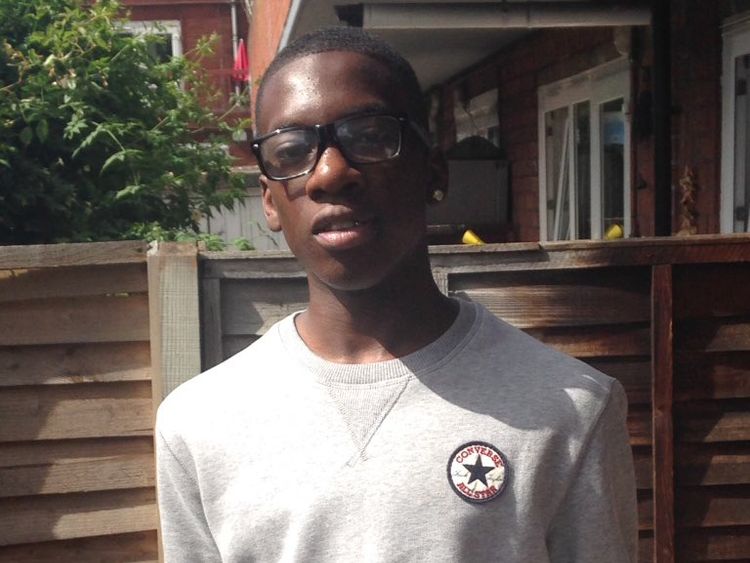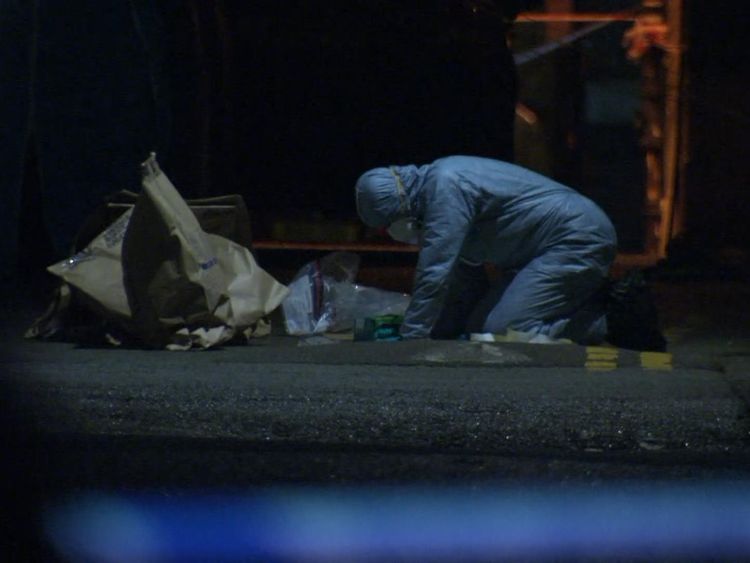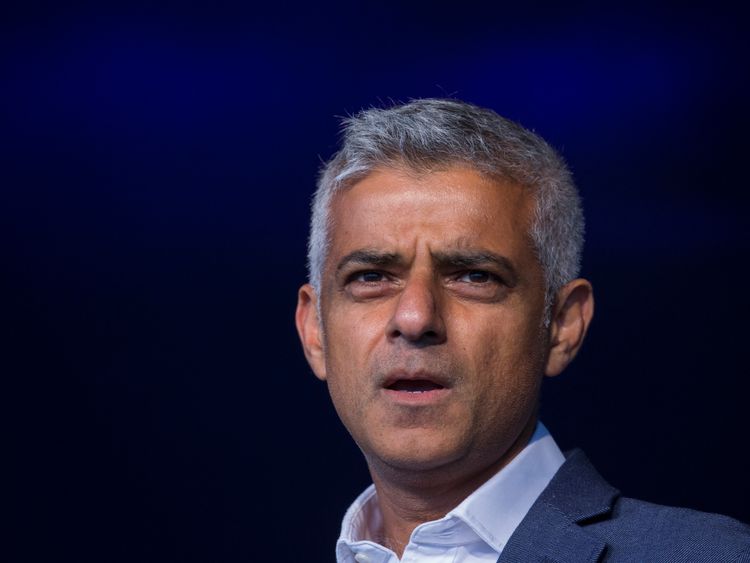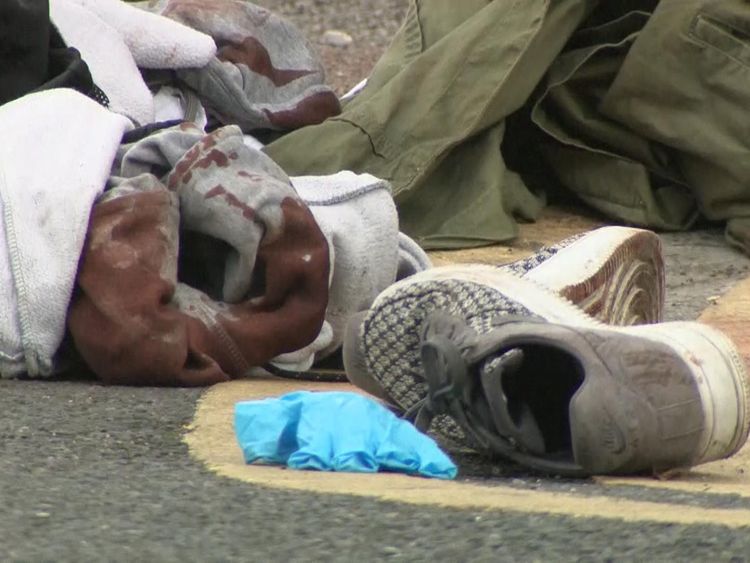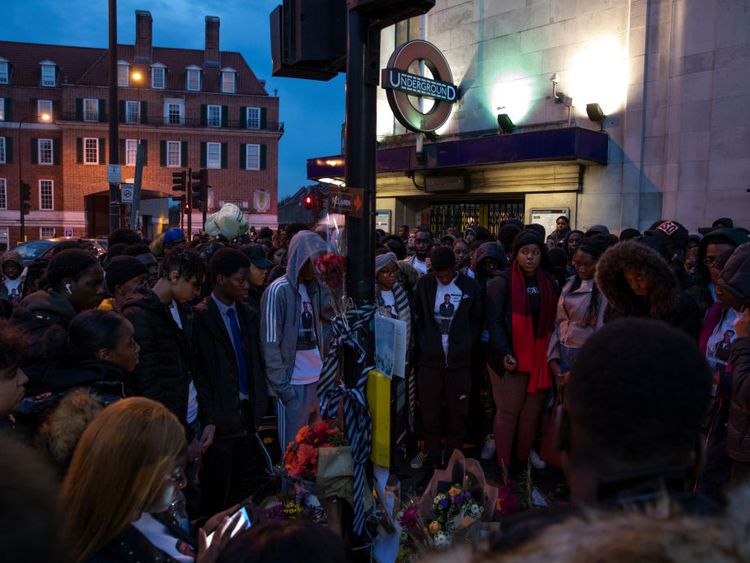Longest period without a killing in London in 2018 was just 16 days
After tracking all killings in the capital, including cases ruled as manslaughter as well as murder, Sky News found the longest gap between fatal attacks was between 25 September to 10 October.
In the last week, a fatal shooting in Enfield on 18 December and a stabbing in Haringey on 22 December have brought the number of people violently killed in the capital to 131.
Twice this year, on 20 February and 15 April, three people were fatally attacked on the same day.
The year’s two bloodiest months, February and March, saw 16 and 21 people die.
“The day still seems like a blur, all I knew was that I wasn’t myself after that whilst still trying to keep my composure because of my daughter. Our lives will never be the same again,” she said.
Israel, whom Ms Ogunsola described as “an amazing smart boy who was extremely talented” and a football lover who was scouted by Arsenal, was the 54th violent death in the capital in 2018.
“The events of his death have left us all traumatised,” she said, adding that her family will be praying for him this Christmas.
Ms Ogunsola is thankful for the efforts put in by the emergency services, saying: “They were amazing, everyone who came to his aid tried all they can to save his life but he just couldn’t hold on.”
But she hits out at the government’s approach to knife crime in the capital, calling it “very, very relaxed” and that stop and search targets “specific type of ethnic minority. It’s ridiculous”.
:: What does the Met say?
The Metropolitan Police has confirmed there were 129 killings between January – November 2018, the last full month that data is available for.
Compared with 2011, the number of murders in London during this same period has risen by 24% – from 104 to 129.
The number of people killed in the capital between January and November in 2018 has risen by nearly 5% from the same period last year, from 123 to 129.
The Met’s official monthly data release, which may not take into account deaths that may have been reclassified as murders at a date after publication, states there have been 123 homicides from January to November 2018.
According to this data, the boroughs of Greenwich and Southwark registered the highest homicide rate, with three people killed per 100,000 population.
Bexley, Harrow and Sutton were the safest, with no offences recorded in 2018.
Select each area on the map below to find out more information.
In response to Sky News’ analysis, a spokesperson for the Met Police said: “Any homicide is one too many, and violence in London has claimed too many lives this year.
“Our thoughts are with all the victims’ families and loved ones who show incredible strength in the face of the most devastating tragedy imaginable. Their assistance and support of the police investigation is invaluable.”
The spokesperson added that the force is “committed to reducing violent crime” and said that since a spike in numbers between February and May homicide rates have begun to “stabilise”.
They said: “We have increased our police enforcement, putting more officers on the streets, including the Met’s Violent Crime Taskforce, and continue to be relentless in our pursuit of those who choose to be violent.”
The Met says that since launching the taskforce, around 2,380 people have been arrested and many of those have been jailed – in addition to the investigations undertaken by local police and specialist crime detectives.
Community-driven initiatives are also under way in a bid to find a long-term solution to tackling violent crime, the Met said.
Mayor of London Sadiq Khan has been under fire for the high figures seen in 2018.
Mr Khan acknowledged the “unacceptable” rise, but claimed he is limited thanks to government cuts.
He told Sky News: “My number one priority is to keep Londoners safe, and it’s unacceptable to see a rise in violent crime in London and across the country.
“We know the causes of violent crime are extremely complex and years in the making, further compounded by years of government cuts to policing and vital preventative services.”
Mr Khan said he is leading a “public health approach to tackling the root causes of violence”, alongside the Violent Crime Taskforce and investment in preventative measures.
“But I am having to do this with one hand behind my back because the government has refused to reverse the £850m of hugely damaging savings the Met has been required to make.”
:: How does London compare to England and Wales?
Homicides across England and Wales rose by 14% in the year to June 2018, according to the most recently available data from the Office for National Statistics.
It grew from 630 in 2017 to 719 – the highest number since 2008, when 775 people were killed.
Of the homicides between June 2017 to July 2018, 20% of them happened in London.
London makes up 15% of England and Wales’s population.
When the rate of murders is compared – London is only the fifth highest in the country.
Greater Manchester has 2.7 murders per 100,000 people, compared to London’s 1.7 per 100,000.
Sussex, at 2.1, Warwickshire, at 2.0, and Cheshire, at 1.8, are also above London.
Victim Support is an independent charity which works with the bereaved, as well as victims and witnesses of crime.
Chief officer Diana Fawcett told Sky News that 2018 had seen an “unprecedented” number of cases.
She said: “We work closely with families bereaved by murder and manslaughter through our national Homicide Service and this year has been unprecedented in the number of cases we have dealt with, particularly in the capital, driven by the increase in violent attacks.
“Too many lives are destroyed and communities shattered by these violent crimes. This isn’t just a police problem but society’s problem – the only way to stop this is a joined up approach with all agencies and organisations working together.”
A Home Office spokesperson said: “We are working to tackle violent crime and its devastating consequences through our Serious Violence Strategy, which puts a greater focus on early intervention, alongside strong enforcement.
“The strategy is also enabling a more coordinated approach involving a range of agencies, including the police, community groups, local authorities, education, health.
“Our brave police officers are essential to this effort, which is why we last week announced an increase to police funding of up to £970m, the most substantial increase since 2010.”
:: Sky News is not including the murders of Abdi Ali, who is thought to have been killed in December 2017 but was found in 2018, Kyall Parnell, 17, who died on New Year’s Eve but the crime was recorded the following day; and Henry Vincent, 37, whose killing was classed as self-defence.
Sky News tracked the number of killings recorded in the press or released on the Met police’s website, and dated the incidents according to the day of the attack.
Source: Read Full Article
